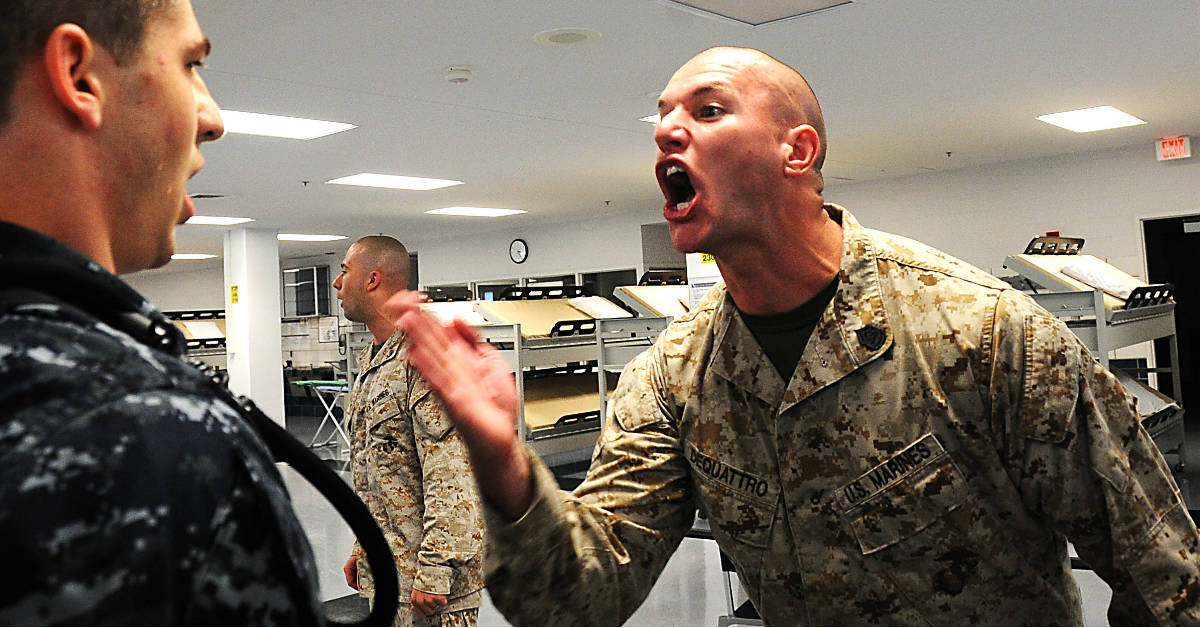Top 5 knife hand employment techniques

Photo: Mass Communication Specialist 1st Class Andre N. McIntyre/Navy
SUMMARY
Bruce Lee introduced the West to “the way of the fist” and Chuck Norris made the round-house kick (in Wranglers and cowboy boots!) legendary. Neither of these individuals invented their signature techniques, but they certainly made them famous. In similar fashion, knife-hand awareness has increased tremendously over the last two decades with contributions ranging from modern legends such as General Mattis, to your run-of-the-mill bro-vet. The novice may assume the knife hand can be launched with reckless abandon, however there are deliberate and technical means by which the knife hand is to be used.
Listed below are five knife hand employment techniques
Direction indicator
When the knife hand is employed as a direction indicator it’s not done in a casual manner such as "The office you are looking for is over there.” Negative. It’s done with an assertive and emphatic manner. When general directions are given, they are also peppered with military lingo. “Maintain your current heading for three clicks on the MSR and bear left at the intersection.” Roger that. The confident delivery leaves little room to question if the directions are correct. Most of the time when the knife hand is used as a direction indicator it is accompanied with corrective verbal commands. “Get off the grass!” Not only do you know to change your behavior, but you are also given the specified path to follow.
Emphasis mechanism
Other than a string of profanity delivered in compound words at a high decibel, nothing gets an audience’s attention like knife hands being stabbed repetitively in the air. This knife hand employment technique is referred to as the emphasis mechanism. It’s akin to bold type in texting or multiple exclamation points in writing. It glares like a teacher’s red pen. The hearer draws the conclusion that either the topic holds life-or-death importance or at a minimum the instructor feels very passionate about the subject. Instructors aren’t taught this method, it’s simply something that’s absorbed by being in the military, particularly the culture of the Marine Corps.
Accusation identifier
When you are in the military, particularly in your first year or so, you are inevitably going to get yourself into some minor trouble for violating regulations you previously didn’t know existed. Until you learn how to navigate the environment of your new career you will find yourself in the First Sergeant’s crosshairs. Like the skilled marksman taking a well-aimed shot, the senior enlisted leader assaults your ears with an attention gainer such as “Hey Marine!” Your grape and stacking swivel rotate as you lock eyes with the First Sergeant. He is employing the accusation identifier knife hand technique aimed directly at you. You feel it pierce your soul. You are in the center of the impact area and he's about to fire for effect. Brace for impact. Stand-by for heavy seas as the ship turns about.
Briefing aid
Somewhere in a conference room right now there’s nerd using a telescopic pointer that looks like your car’s antennae. Highly professional POGs and airplane drivers like to use laser pointers. The good ole knuckle-dragging, black coffee drinking, old school lifer needs nothing more than a traditional knife hand for a briefing aid. It’s versatile, standard issue, sustainable and organic. You can use it to point on the map, point at the chart, or point at the terrain model. You can even use it in tandem with profound statements such as “That way is North." Its adaptability allows the user to quickly transition from directing attention on briefing products, to identifying individuals asking questions. “Tracer, what have you got?”
Embarrassment inducer
Though similar in nature to the accusation identifier, the embarrassment inducer is a slightly different knife hand employment technique. The key difference being the accusation identifier is a direct fire weapon and the embarrassment inducer is an indirect fire weapon. The accusation identifier only corrects one person. When the embarrassment inducer method is engaged, though only one person is embarrassed, multiple individuals are corrected. The scenario unfolds something like this:
A Marine walks through a populated common area and neglected to blouse his boots. The First Sergeant (without making eye contact with the offender) looks at the crowd and barks the inquiry, “Well I guess we’re just gonna wearing bell bottoms now, huh?!” The knife hand is pointed at “Lance Corporal Bellbottoms.” All eyes follow and the crowd directs their attention to the humiliated Leatherneck who quickly corrects himself. All hands are reminded to check themselves and each other from here on out, or else be subject to public mockery.
The five knife hand employment techniques described above are merely introductory explanations. Great caution should be taken before haphazardly whipping them out. Initial usage should be in controlled environments with experienced personnel in place to coach performance. As you become salty you will be able to employ the proper knife hand to fit a given situation as well as develop the ability to seamlessly transition between techniques. Carry on.
SHARE
